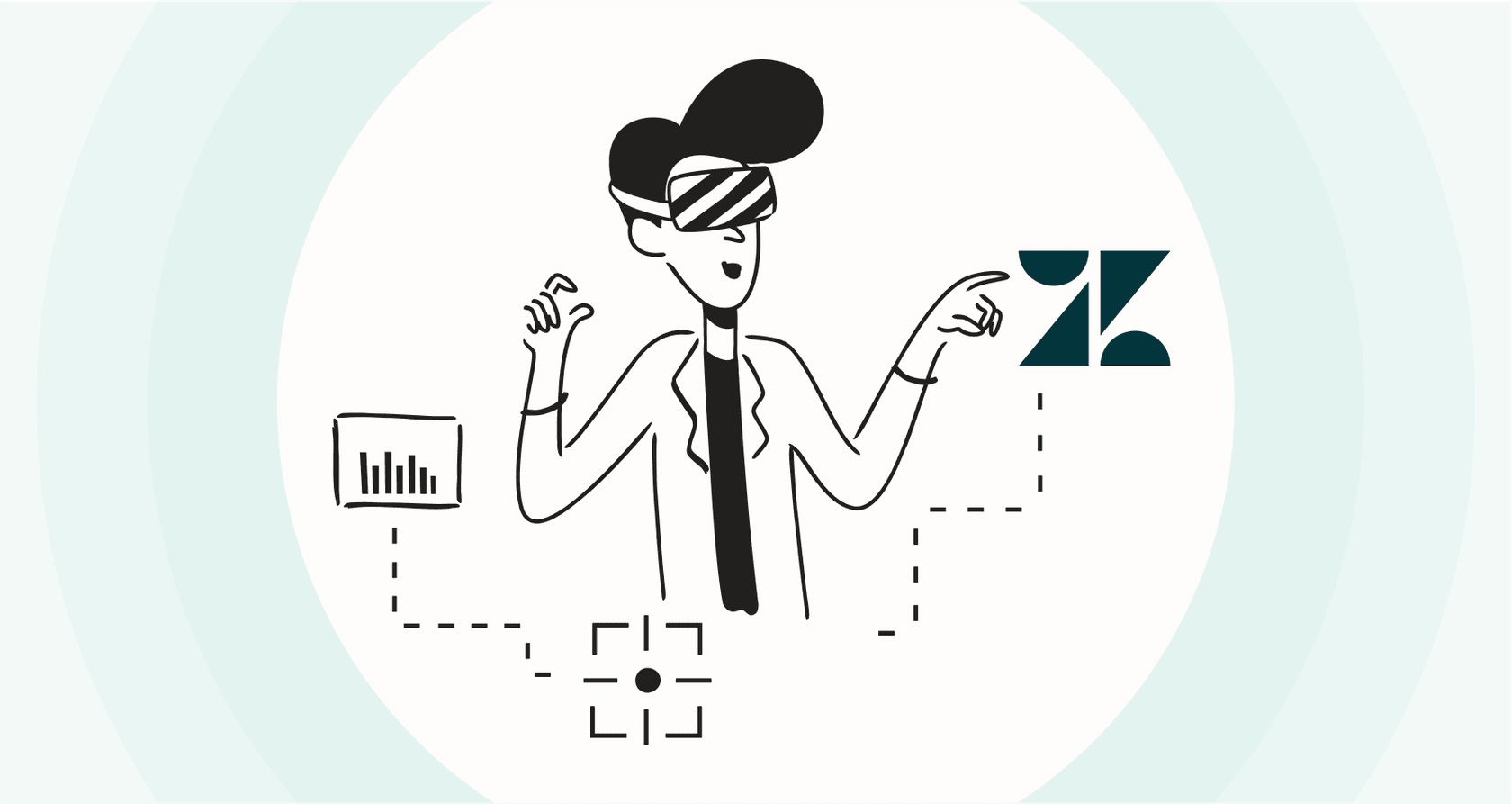How to automate Zendesk CSAT surveys for better response rates

Kenneth Pangan
Last edited June 23, 2025

Customer Satisfaction (CSAT) is basically your customer's report card on your support team. It tells you straight up if you're doing a good job solving their problems and making them feel good about the interaction. Think about it, nobody likes a frustrating support experience. In fact, 60% of consumers will actually switch brands because of a bad time with a contact center (Source 4). So, getting CSAT right isn't just a nice-to-have for support, it's pretty important for the whole business.
Setting up automated Zendesk CSAT surveys means you consistently ask for this feedback right after you solve a ticket. This guide will walk you through setting that up in Zendesk, share some simple tips to get more people to actually fill out the survey, and touch on how using AI can help you really dig into what all that feedback means.
What is Zendesk CSAT and why does it matter?
Zendesk CSAT is your way of checking in with customers after they've interacted with your support. It asks them to rate how happy they were with their experience once their ticket is closed. Usually, this comes as a simple question sent by email or through messaging, something like "How satisfied are you with the support you received?" They pick a rating (like Good, Bad, or a number on a scale) and often have a spot to leave extra comments if they want to explain their choice.
Getting this CSAT data is super important because it's a direct line to understanding how your support team is doing from the customer's point of view. A high CSAT score usually means your team is solving problems well and being helpful and friendly, which is exactly what keeps customers around and happy. Keeping an eye on CSAT helps you see what's clicking and where you might need to tweak things. It's all about making those interactions better, which definitely helps your business in the long run.
What you'll need
To get your Zendesk CSAT surveys running on autopilot, you'll need a few things:
- A Zendesk Support account that's up and running. You'll likely want a Professional or Enterprise plan for all the bells and whistles, but CSAT itself is available starting on Suite Growth+ plans.
- CSAT needs to be switched on in your Zendesk Admin Center.
- A basic grasp of how Zendesk's triggers and automations work. Don't worry, we'll walk through it.
Setting up your Zendesk CSAT automation
Getting your CSAT surveys automated in Zendesk means you're asking every customer for feedback once their ticket is solved. This keeps things consistent, which is key to getting enough data to actually learn from. The magic behind this in Zendesk is using their built-in triggers or automations.
Step 1: Turn on CSAT in Zendesk
Before you can even think about automating CSAT surveys, the first thing is to make sure the feature is actually switched on in your Zendesk account. It's a pretty straightforward flick of a switch inside the Admin Center.
Head over to:
Admin Center > Objects and rules > Business rules > Satisfaction
Right there, you'll see the option to enable Customer Satisfaction ratings. Once you turn it on, Zendesk automatically starts adding the CSAT survey request to tickets that get marked as solved, usually after a little while based on the default setup. This is the essential first step that gets the whole feedback system rolling.
Step 2: Tweak your survey settings
After you've enabled CSAT, you can make the survey itself feel more like you. Zendesk lets you change the question, the rating options (maybe you prefer a 1-5 scale instead of just Good/Bad), and even the labels for those ratings.
Stay in that same Satisfaction settings area. You'll find options to play around with how the survey looks and what it asks. You can also decide if customers have to leave a comment, especially if they give a negative rating. This is super helpful for figuring out why someone wasn't happy. Customizing these bits helps you collect feedback that's most useful for your team.
Step 3: Build the CSAT automation trigger
While just enabling CSAT gives you some basic automation, you can get really specific about when that survey goes out by using Zendesk triggers or automations. Triggers are basically rules that make something happen when a ticket event occurs.
Go to:
Admin Center > Objects and rules > Business rules > Triggers
You'll probably see a standard trigger like "Notify requester of solved request." You can either tweak that one or create a brand new one just for CSAT. Set it up so it fires when a ticket's status becomes "Solved." You can add other conditions too, like maybe only for tickets from a specific brand or handled by a certain team. The action for this trigger will be to "Email user (requester)" and make sure you include the {{satisfaction.survey_section}} placeholder somewhere in the email body. This little bit of code magically inserts the survey link or buttons into the email. You can also add a delay, like sending it 24 hours after solving, just to give the customer time to make sure everything is truly fixed.
Step 4: Personalize the survey message and how it's sent
The message that goes along with the CSAT survey is just as important as the survey itself. You can customize the email or messaging template to sound more like your brand and encourage people to actually respond.
When you're editing that trigger action (from Step 3), you'll get to write the email body. Put together a friendly, clear message explaining why you're asking for their feedback and how their thoughts help you get better. Pop the {{satisfaction.survey_section}} placeholder where you want the survey part to show up. If you're using messaging channels, the survey usually just appears right there in the chat after the ticket is marked solved. Just make sure the language feels natural, like a real person wrote it, not some stiff, robotic text.
Pro tip: Give your automation a test run
Before you send your new CSAT automation out to all your customers, definitely test it out thoroughly. Create a few pretend tickets and mark them as solved. See exactly when the survey arrives and how it looks. Click the links, see where the comments go.
Testing helps you catch any little mistakes in your setup, check if the timing feels right, and just make sure the whole experience is smooth for the customer. You can even test out different message tweaks to see which ones seem to work best before you decide on the final version.
Simple ways to get more Zendesk CSAT responses and better feedback
Okay, so automating the surveys is step one. But getting customers to actually respond and give you useful feedback? That takes a little extra something. Here are a few straightforward tips to help boost those Zendesk CSAT response rates and get more quality comments:
- Get your agents involved: Encourage your support team to politely mention the survey at the end of a really good interaction. A little personal nudge from the agent they just had a great experience with can make a big difference in getting them to respond.
- Find the sweet spot for timing: Send the survey soon after the ticket is solved, but maybe not instantly. Giving the customer a little bit of time to confirm the issue is truly resolved before asking for feedback can be a good idea. Remember, Zendesk's automation trigger lets you set delays.
- Keep it super simple: The Zendesk CSAT survey is designed to be quick and easy. Try not to complicate things by adding extra questions or steps outside the standard flow. The easier it is, the more likely people are to finish it.
- Always include a comment box: While the rating is helpful, the why behind the score is gold. Make sure customers can leave optional comments. This is where you learn about specific problems or hear praise about an agent that really helped them out.
- Make the whole interaction human: Even the automated messages around the survey should sound like they're from a person. More importantly, encourage your agents to be themselves, use personalized language, and show genuine empathy during the support conversation. Building that connection makes customers feel more valued and often more willing to share their thoughts afterwards.
What to do with your Zendesk CSAT data
Once you start getting those CSAT responses rolling in, looking at the data is key to figuring out how to keep getting better. Zendesk has built-in reports that show you your overall CSAT score and how it changes over time.
Go to:
Reporting > Analytics > Satisfaction.
Here, you can see your score, how many good vs. bad ratings you got, and usually filter this by who handled the ticket, which channel it came from, or what group it was in. Look for patterns: Are certain agents consistently getting high or low scores? Do tickets about a specific topic or from a particular channel seem to get more unhappy ratings? And definitely spend time reading those comments – they give you the real story behind the numbers.
Using AI to get even better at Zendesk CSAT
Zendesk's tools are great for collecting and viewing your CSAT data, but bringing in AI can help you dig way deeper and actually get ahead of issues that affect those scores. Trying to read through hundreds or even thousands of CSAT comments manually to find trends? That takes ages. This is where AI really helps out.
Here are some ways AI can help improve your CSAT:
- AI can look at all that unstructured feedback in your CSAT comments and spot recurring themes, see if sentiment is changing, and catch emerging problems you might otherwise totally miss.
- Tools like eesel AI can connect with your Zendesk account and learn from your past tickets and support conversations. This helps the AI understand the specific kinds of issues your customers face and how your agents usually respond.
- eesel AI can then help pinpoint knowledge gaps based on what customers are asking about or even help agents draft more understanding and helpful replies, which directly impacts the quality of the interaction that leads to better CSAT scores.
- Unlike some native AI options that might feel a bit limited or charge you per resolution, eesel AI offers flexible ways to train it and clear pricing, making it easier to actually use those CSAT insights effectively.
Ready to boost your Zendesk CSAT even more?
Automating your Zendesk CSAT surveys is a really foundational step for consistently getting feedback from your customers. By following the steps to turn it on and set up the automation, you make sure you're always collecting that important data. To get more people to respond, focus on good timing, keeping the survey simple, and getting your agents to encourage participation. Looking closely at the data you get back helps you see how things are going and where you can make improvements.
Want to go beyond just looking at reports and actually use your CSAT data to really improve your support experience? eesel AI connects with Zendesk to help you analyze feedback in more detail, find those knowledge gaps, and give your agents the tools to provide the kind of service that makes customers say "Wow!"
Start a free trial today or book a demo to see how eesel AI can help you get those Zendesk CSAT scores climbing.





